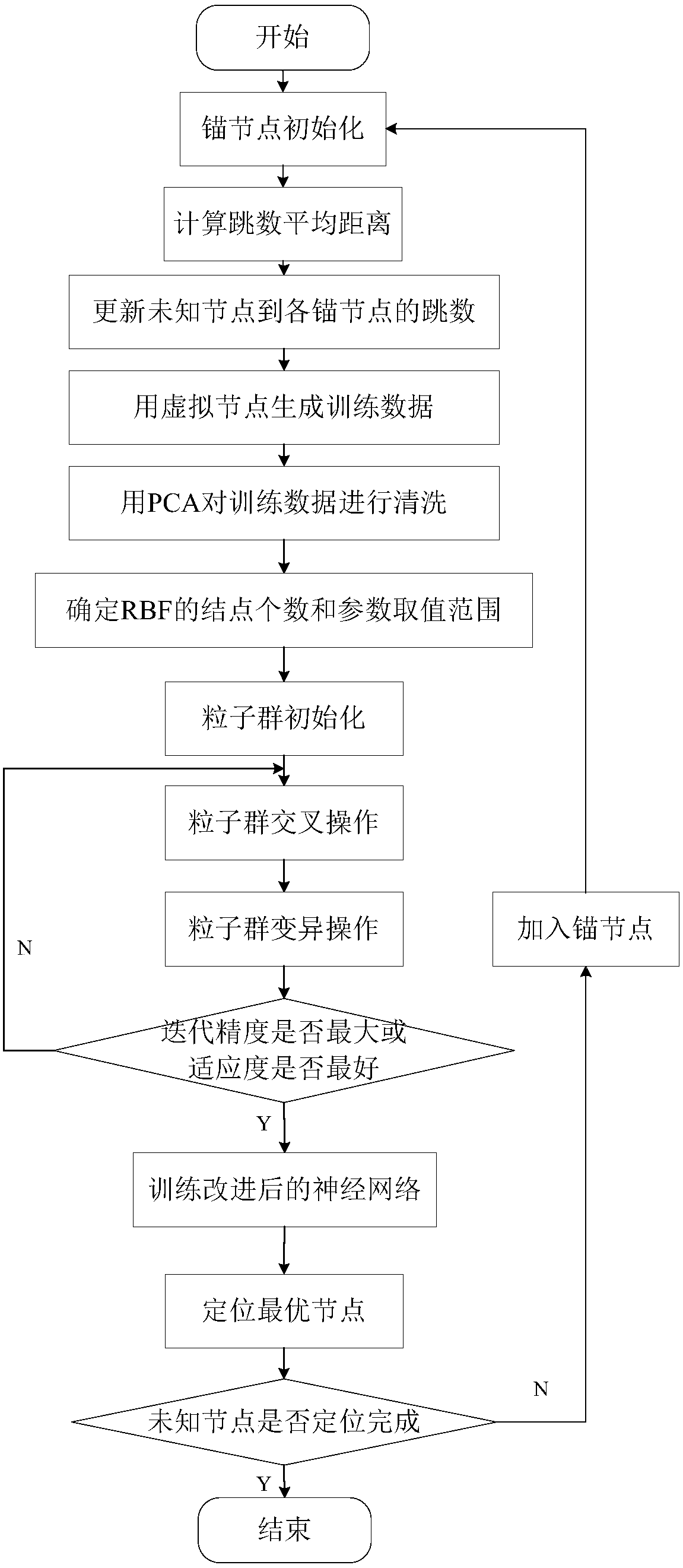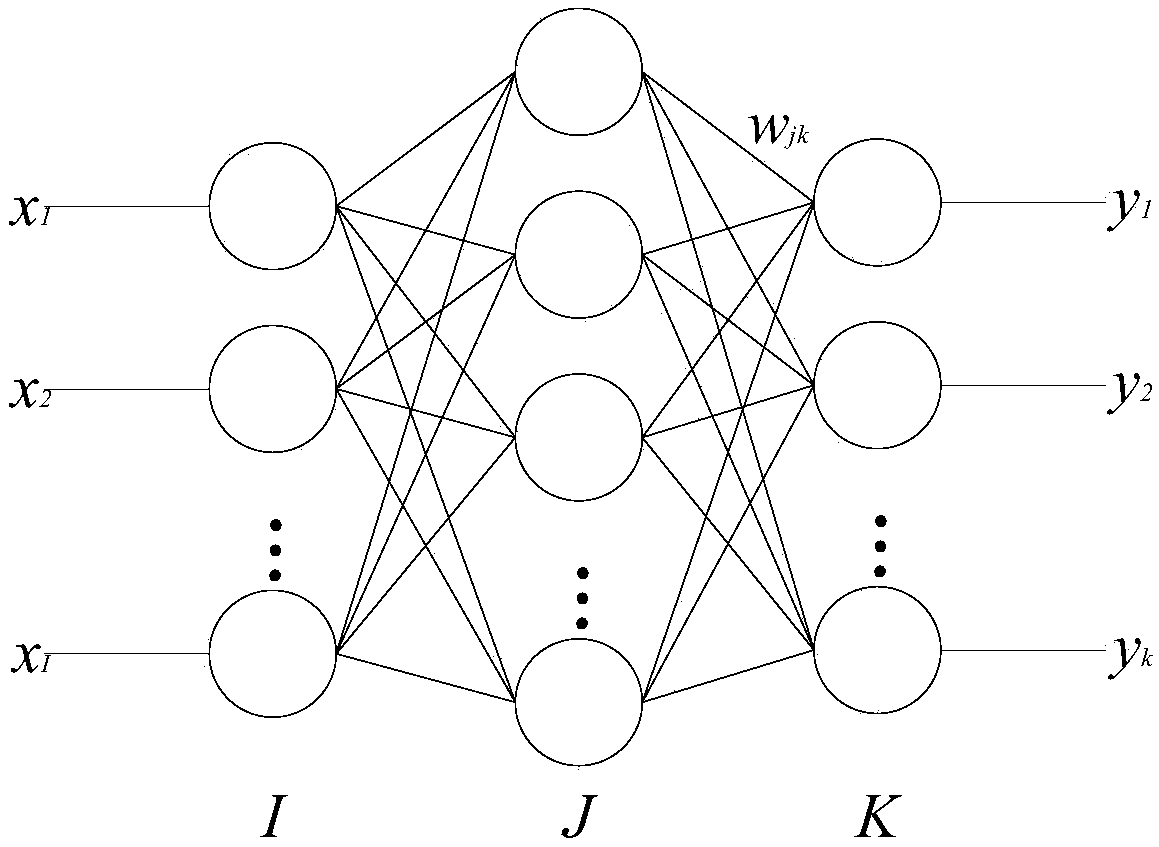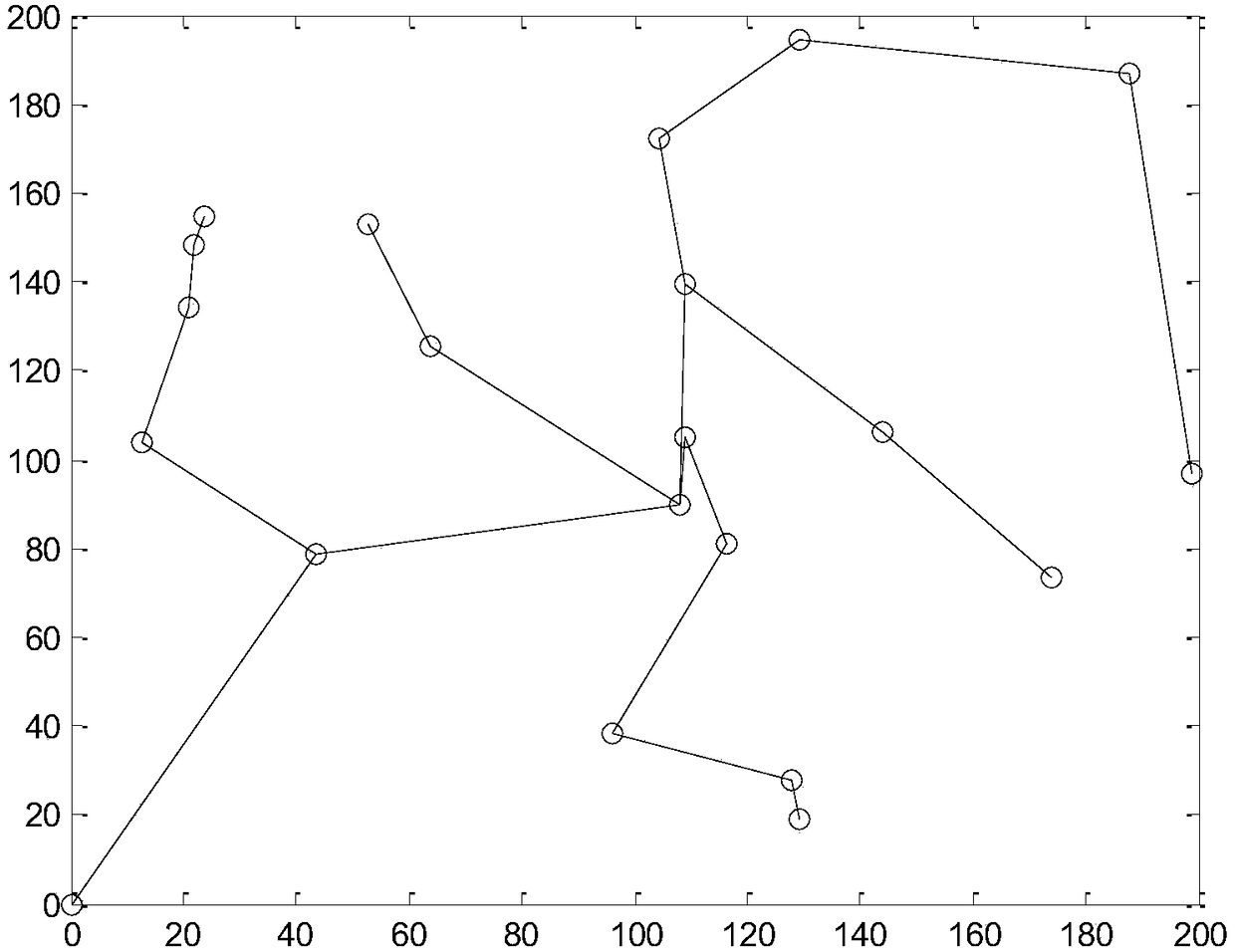A positioning algorithm for wireless sensor networks based on pso-ga-rbf-hop
A PSO-GA-RBF-HOP, wireless sensor technology, applied in the field of wireless sensor network positioning algorithm based on PSO-GA-RBF-HOP, can solve the problem of high sensor price, very high external environment and hardware support requirements, AOA algorithm Interference and other problems, to achieve the effect of improving accuracy, improving diversity, and good performance
- Summary
- Abstract
- Description
- Claims
- Application Information
AI Technical Summary
Problems solved by technology
Method used
Image
Examples
Embodiment 1
[0070] Step 1. Anchor node initialization and calculation of the average distance of hops;
[0071] According to the requirements, in the 200×200 area, 20 anchor nodes are fixed, plus the origin, a total of 21 anchor nodes, and the coordinates of the 21 anchor nodes in the area are shown in Table 1.
[0072] Table 1 Coordinates of 21 anchor nodes in the area
[0073] anchor node number
1
2
3
4
5
6
7
X axis left
116.45
108.15
173.99
52.96
63.61
23.84
187.97
Y-axis coordinates
80.92
89.67
73.16
152.70
125.58
154.40
186.57
anchor node number
8
9
10
11
12
13
14
X axis left
129.11
95.89
127.86
108.94
129.46
108.78
144.21
Y-axis coordinates
194.55
38.41
27.77
139.25
18.76
105.08
106.07
anchor node number
15
16
17
18
19
20
21
X axis left
104.50
198.74
43.74
21.16
21.9...
PUM
 Login to View More
Login to View More Abstract
Description
Claims
Application Information
 Login to View More
Login to View More - R&D
- Intellectual Property
- Life Sciences
- Materials
- Tech Scout
- Unparalleled Data Quality
- Higher Quality Content
- 60% Fewer Hallucinations
Browse by: Latest US Patents, China's latest patents, Technical Efficacy Thesaurus, Application Domain, Technology Topic, Popular Technical Reports.
© 2025 PatSnap. All rights reserved.Legal|Privacy policy|Modern Slavery Act Transparency Statement|Sitemap|About US| Contact US: help@patsnap.com



